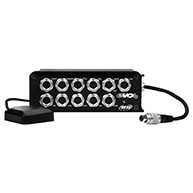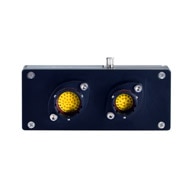|
Data Acquisition 201
Introduction to Advanced Data Acquisition Systems for Dual-Purpose Street/Track Cars
Installing a Race Dash with the Factory Instrument Cluster
This page will cover the basic installation and other need-to-know topics for using a racing dash unit in a car that retains the factory instrument cluster. Such dual-purpose cars are common where the car retains a lot of street functionality but the driver wants more race-focused data logging and information. This is a step up from the lap timing equipment we covered in our Data 101 article. This page is not model specific and not all of the info applies to all models. We encourage you to contact us about any data acquisition questions for a specific BMW model.
Installing the race dash in a street car comes with drawbacks and limitations that are not an issue with a dedicated race/track car. The installation and use of the race dash must be as unobtrusive as possible to avoid upsetting the factory systems for emissions compliance, diagnostics, and service. However, while it's possible to leave little trace behind there will be permanent modifications required to the vehicle or wiring. And placement of the dash will hardly be ideal. At least the basic information and equipment can be carried over to any new race car build or if you continue modifying your street car for dedicated track use.
We really prefer the AiM line of data systems because of the quality and the completeness of their product line. You can stay within the same brand and get everything you need and its all guaranteed to talk and work with each other. But this page has good info for any dash logger in a street car. We'll cover data analysis and interpretation in a later article.
Race Dash Components - Sensors
Even our full-race builds retain the factory BMW sensors for data and the same applies here. They are usually positioned in the ideal location (usually), are of excellent quality, and the wiring is already in place. Replacement sensors are readily available and not expensive. We sometimes add another sensor if the factory one doesn't suit our purposes or if we want a reading from a different location.
Race Dash Components - Wiring
Motorsport dashes use what's commonly known as a Deutsch motorsport connector on the back of the dash unit. These are heavy-duty, military-spec connectors that are vibration and water resistant and deliver a precise connection. A 37-pin motorsport harness is included with the AiM dashes. A 22-pin expansion harness may also be available. The other end of the harness terminates in either open wires and/or several Binder connectors so you can easily group sensors together. Binder connectors are readily available from electrical or hardware suppliers (they are not motorsport specific). AiM uses Binder 719 (black plug-in style) or Binder 712 (silver screw-together style) connectors. Extension cables (called Patch cables) are also available to ease your installations.
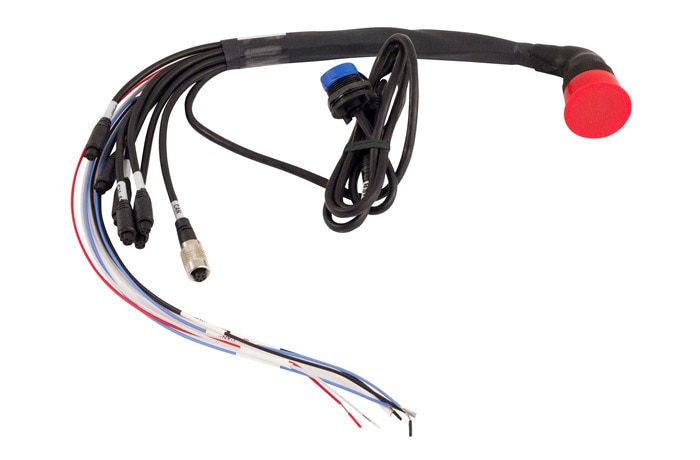
AiM 37-pin harness.
Under this scenario the factory instrument cluster, ECU, and all other systems are to remain functional so we have to work around what's already in place. If this were a full-race build we would be trimming the stock harness, removing unnecessary components, and adding Binder connectors to the stock harness to connect sensors to the AiM network. But for a dual-purpose car we will tap into the existing factory wiring instead.
For OBD-I cars or models before E46 the data has to come from individual sensors around the car. This is tapping into the factory sensor wiring for each data point you want to record/display. For example, to get the RPM signal you need to locate that particular wire going to the factory instrument cluster. Unlike later models there is no single source for all of the data sources you want. Remember that for each sensor recording data you occupy one channel in an AiM system. You need a Expansion Hub for every four channels.
For any chassis E46 and later we tap the CAN wires located on the ECU wiring harness in the engine bay (see below for PDF and YouTube links). This gives us access to almost everything we want. AiM also makes a plug-n-play harness for the OBD connector but in our experience the available data through the OBD port is very limited (and not available for E46 M3 and E9X M3). If you don't want to touch any of the factory wiring, however, the OBD plug is your only option. You can always tap the ECU wires later on if you feel the OBD plug is too limited.
Tapping the CAN wiring will give you a very large amount of very useful data. For example, on a BMW E46 330i/M3 tapping the CAN provides the following data points from just two wires:
- RPM
- Vehicle speed
- Throttle pedal position
- Throttle body position
- Steering angle
- Brake pedal switch
- Brake system pressure
- Clutch pedal switch
- All four wheel speeds
- Engine water temperature
- Engine oil temperature
- Transmission oil temperature
- Alternator output
- Calculated torque output
- Outside air temp
This is enough info to tell you what you're doing before, during, and after the corner as well as what water or oil temps are doing during a session. Combine with GPS and you can get a track map with all of those data points plotted.
If you need more data you can add analog sensors through the AiM Channel Expander. For example, an engine oil pressure reading requires a dedicated sensor and wiring on E46.
Wiring Tips:
Race Dash Components - Hubs & Peripherals
In addition to the ECU data you need to determine what other data you want to display/record. The above data might be enough but there's more available. While the ECU data can be wired directly to the dash, any additional sensor data will need to go through a data hub before being sent to the dash. Below are the common hubs and modules that apply to our dual-purpose customers:
GPS Module - some race dash units will have an internal GPS while others require a separate module. GPS data is hugely helpful to pair with your data as well as to record lap times. AiM has over 2,000 tracks pre-loaded in its software so the dash will auto-sync if the GPS module is plugged in. The module also includes sensors for longitudinal and latitudinal g-forces. If required, the GPS Module will plug into the 37-pin dash harness.
Data Hub - required for any peripheral components, such as the GPS Module, Channel Expansion Hub, or Lambda Module, etc. The Data Hub plugs into the 37-pin dash harness.
Channel Expansion Hub - each additional sensor will occupy one channel in the network. The Channel Expansion Hub is capable of receiving four analog or digital channels and sending that data to the Data Hub.
Lambda/Air-Fuel Controller - works with a Bosch Motorsport LSU4.9 wideband oxygen sensor to interpret air-fuel ratios to the dash display. If you're fine-tuning the engine mapping or just want to monitor air-fuel ratios through the dash display this module is needed. Bosch Motorsport oxygen sensor not included. The Lambda controller will plug into the 37-pin dash harness.
Camera - AiM systems require their own SmartyCam HD camera. A GoPro or other camera may not work without some additional interface. On AiM systems, the SmartyCam will plug into the 37-pin dash harness.
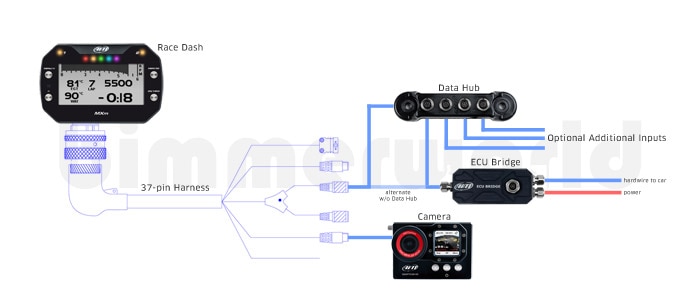
AiM MXM example layout. Click for larger.
Race Dash Components - Mounting & Installation
Mounting a race dash in a street car can be a challenge. Normally we remove the instrument cluster and install the dash on a custom bracket. But on a street car the best place is on the steering column between the dash and steering wheel. This is less than ideal as there's not a lot of room here. On some models this requires a racing-style steering wheel as the stock wheels are too thick. We offer brackets for some models but some fabrication and custom work will likely be required here, especially if you want to make it removable in between events. You may want to mount it off to the side or with a suction cup mount as long as it doesn't interfere with your driving.
Data Loggers without a Dash Display
If the data is more valuable than the display there is the option of a data logger mounted in the car that does not require the dash display. AiM makes two standalone data loggers - EVO4 and EVO5. All of the above info applies and you can mount the EVO logger anywhere in the car. At the end of your session download your data to your laptop for review. These loggers also accept SmartyCam video.
The EVO4 works as a Data Hub with Binder connectors. The EVO5 works with a 37-pin or 22-pin motorsport harnesss.
Race Dash Display
The dash display on most units is customizable. You can program it to display the data you want or scroll through pages of data. You'll most likely want to have critical information like RPM, water temp, oil temp, and oil pressure on the main page. But you can configure the screen any way you want. Some products like the AiM MXP will display your data as digital numbers or as faux-analog style. Shift lights can also be programmed for each gear. You can also set up custom alarms and other warnings for any of your sensors.
Software
AiM produces their own in-house software program called Race Studio. Race Studio is free to download and you can try it out before using your AiM products. It's a very advanced software tool that's even used by driving coaches and engineers. It may be intimidating at first but with practice and use everyone gets comfortable with it.
It's not used only for data analysis. Every AiM product has to be configured and initialized through Race Studio. Firmware updates are also done using Race Studio. It's recommended to configure and update your equipment when you first receive it as well as periodically. For your dash install you will want to configure the dash with Race Studio for the wiring connection you plan - OBD or CAN.
Additional Resources
Data Acquisition 101 (Lap Timers)
Data Acquisition 202 (Race Dash in a Dedicated Race Car)
AiM YouTube channel (excellent resource for how-to videos and advice)
AiM Frequently Asked Questions
AiM Documentation
Shop Data Acquisition:
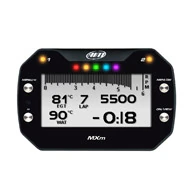 Dash Displays | 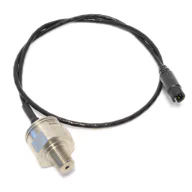 Sensors | 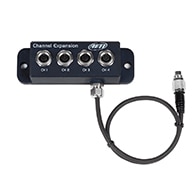 Hubs & Peripherals | 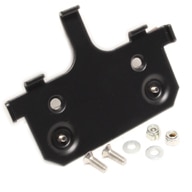 Accessories |
| Sort by Name | Sort by Price |


